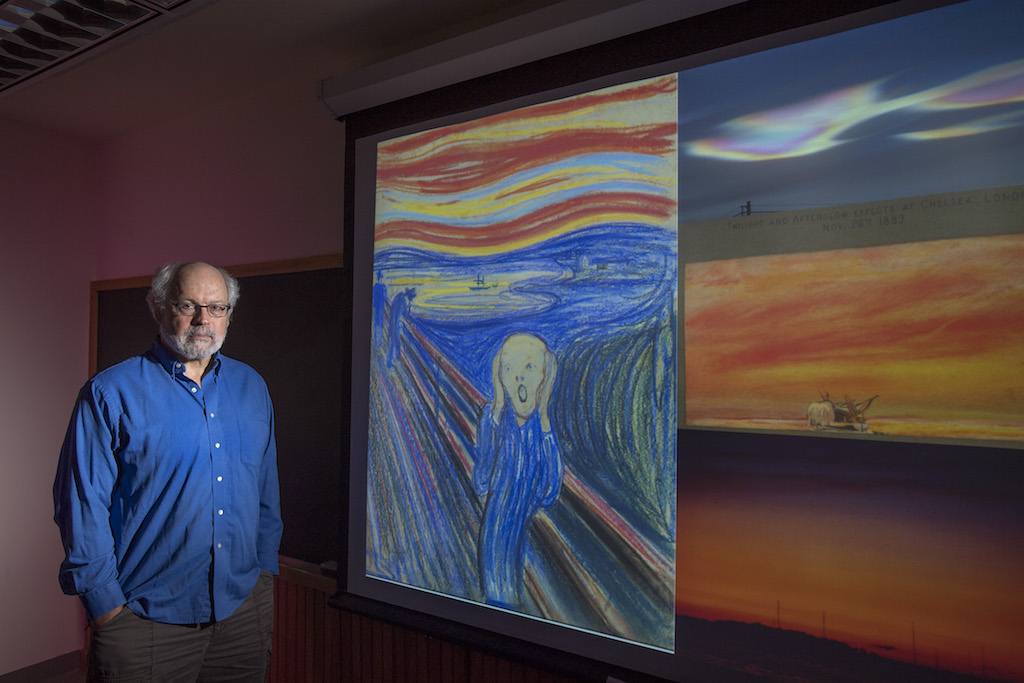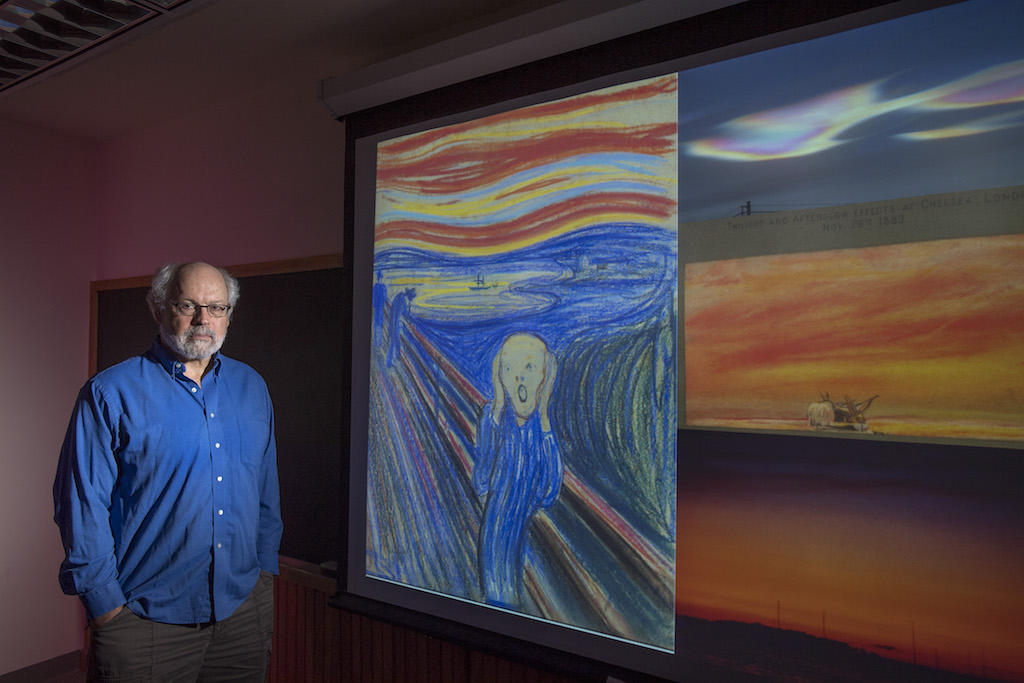[ad_1]

Rutgers University professor Alan Robock with The Scream.
NICK ROMANENKO/COURTESY RUTGERS UNIVERSITY
The strange weather in Edvard Munch’s The Scream (1883) has long been seen as an example of the Norwegian artist’s penchant for the surreal, but now a group of scientists believes there’s a meteorological explanation for the wavy-looking clouds in the painting’s background. According to a new study published in the Bulletin of the American Meteorological Society by researchers at Rutgers University in New Brunswick, New Jersey, and the University of Oxford and University of London, the sky’s strange appearance in Munch’s work is due to nacreous or “mother of pearl” clouds, which can often be seen in southern Norway.
The new study, authored by Fred Prata, Alan Robock, and Richard Hamblyn, builds on the findings of a similar paper published in 2017 that likewise claimed Munch was painting nacreous clouds, a weather condition in which the sky appears hazy, colorful, and blurry, in ways not unlike the background of the artist’s painting. According to the study, The Scream may be one of the first known artworks depicting these kinds of clouds.
Munch depicted the painting’s protagonist with their hands to their ears—a gesture typically explained as an expression of the character’s inner psychological turmoil. But, according to the study, there is a scientific explanation for this as well. In a statement, referring to the fact that Norway’s sky had been affected by the eruption of the volcano Krakatau, Robock said, “What’s screaming is the sky and the person in the painting is putting his or her hands over their ears so they can’t hear the scream. If you read what Munch wrote, the sky was screaming blood and fire.”
[ad_2]
Source link

